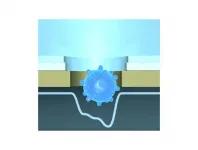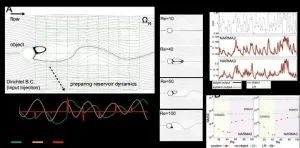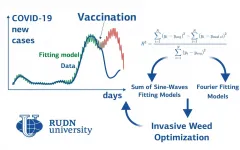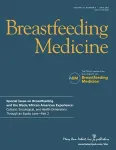(Press-News.org) As demand for electricity rises and climate change brings more frequent and extreme storms, residents in rural and suburban communities must have access to the minimal electricity they need to survive a large, long-duration (LLD) power outage.
A new study in the journal Risk Analysis compared strategies for providing emergency power to residents in two hypothetical New England communities during such an event. The results suggest that cooperative strategies like sharing a higher capacity generator among multiple homes cost 10 to 40 times less than if each household used its own generator.
"Our findings provide impetus for utilities, regulators, and policy makers to make collective options readily accessible to communities," says co-author M. Granger Morgan, Hamerschlag University Professor of Engineering at Carnegie Mellon University and co-director of the National Science Foundation's Center for Climate and Energy Decision Making.
LLD-outages are defined as blackouts that extend over multiple service areas or states and last several days or longer. Over the last decade, severe storms have caused LLD-outages affecting millions of people. In 2012, Superstorm Sandy disrupted power in 21 states, affecting over 8 million customers with approximately 800,000 customers still without power after 10 days. And in 2017, Hurricane Maria devastated electrical service across Puerto Rico for months.
In their study, the researchers focused on power resilience among often-overlooked residential customers in rural and suburban communities. "Rural and suburban communities tend to be more vulnerable in long-duration outages," says Angelena Bohman, lead author and a Ph.D. candidate in Engineering and Public Policy at Carnegie Mellon University.
Most rural and suburban areas have overhead power lines, which can be taken down by high wind events like hurricanes and tornadoes. Ice storms can also weigh down and snap overhead lines. "The more spread out communities are, the harder it is for residents to access support in an emergency due to destroyed or blocked roads and limited fuel access," says Bohman. "They are also likely to have to wait longer for power to be restored as other critical infrastructures and urban communities typically get priority."
The team's analysis focuses on two hypothetical communities in New Hampshire, a region that has experienced both hurricanes and ice storms and where there is a risk of frozen pipes during a winter outage that could result in serious water damage. One of the hypothetical communities relies on a fuel mix for heating; the other uses piped natural gas. The study compares individual and cooperative strategies for providing limited amounts of power to residential customers in both communities during an LLD-outage.
To estimate how much power is needed by each household, the researchers considered only the energy needed for basic survival. In freezing temperatures, households need enough heat to prevent hypothermia and frozen pipes (a thermostat setting of 50° F). They need enough power to support minimal lighting at night and to charge mobile devices. A refrigerator is necessary during summer, but not winter. Air conditioning was not considered a necessity.
The analysis suggests that most houses require roughly 600 running watts during an outage to meet their emergency demand, regardless of the season. This "emergency load" comprises about 10 percent of normal household load.
The researchers analyzed the cost and performance of these four different strategies for providing emergency power during an LLD-outage:
Individual houses each purchase and use their own emergency generator fueled with gasoline, propane, or diesel or have installed a PV + battery system.
A 10-house "neighborhood" operates as a microgrid served by a small, single-phase generator fueled with propane, diesel, or natural gas
A 100-house "community" operates as a microgrid using a three-phase generator fueled by propane, diesel, or natural gas
A single, large, three-phase generator or microturbine capable of serving the entire feeder for a community is located at the substation.
They considered each strategy's performance during outages that lasted five, 10, and 20 days in duration. Compared to the cost of running an individual generator at each home, the results showed that the three cooperative solutions cost 10 to 40 times less per household.
Providing a gas-powered generator to each home would be problematic if an outage lasted more than a few days. A 5.5kW portable generator would require 300 gallons of gasoline during a 20-day outage as well as four to five oil changes. Keeping it running that long would only be plausible if the town made prior arrangements to keep filling stations operating and reached agreements about fuel supply priorities with emergency responders and others.
Co-author Ahmed Abdulla, assistant professor in the department of mechanical and aerospace engineering at Carleton University, points out that while collective strategies are significantly cheaper than individual strategies, they also require prior arrangements between customers and with the local township, local utility, third party suppliers, and regulators such as the state's Public Utility Commission (PUC).
All of this may be worth it to a state like Texas, which suffered devastating rolling blackouts during severe winter storms last February. More than 4.5 million homes and businesses were without power, some for more than three days. "If customers on distribution feeders in Texas had implemented any of the strategies outlined in our paper they would have had access to enough power to avoid frozen pipes, modestly heat their home, keep a few lights on, and cycle through other small loads to make the situation much more bearable," says Bohman.
Finding cost-efficient solutions to mitigate the impacts of climate change is more important than ever, adds Granger. "Unfortunately, the risk of LLD-outages is growing as climate change brings more frequent and extreme weather events. We are developing a set of strategies to assess how resilient a power system is likely to be as it strives to balance decarbonizing the power grid while also protecting it against these extreme events - two goals that are not always easily aligned."
INFORMATION:
About SRA
The Society for Risk Analysis is a multidisciplinary, interdisciplinary, scholarly, international society that provides an open forum for all those interested in risk analysis. SRA was established in 1980 and has published Risk Analysis: An International Journal, the leading scholarly journal in the field, continuously since 1981. For more information, visit http://www.sra.org.
Osaka, Japan - A team of scientists headed by SANKEN (The Institute of Scientific and Industrial Research) at Osaka University demonstrated that single virus particles passing through a nanopore could be accurately identified using machine learning. The test platform they created was so sensitive that the coronaviruses responsible for the common cold, SARS, MERS, and COVID could be distinguished from each other. This work may lead to rapid, portable, and accurate screening tests for COVID and other viral diseases.
The global coronavirus pandemic has revealed the ...
[Background]
In recent years, physical reservoir computing*1), one of the new information processing technologies, has attracted much attention. This is a physical implementation version of reservoir computing, which is a learning method derived from recurrent neural network (RNN)*2) theory. It implements computation by regarding the physical system as a huge RNN, outsourcing the main operations to the dynamics of the physical system that forms the physical reservoir. It has the advantage of obtaining optimization instantaneously with limited computational resources by adjusting linear and static readout weightings between the output and a physical reservoir without requiring optimization of the weightings by back propagation. However, since the information processing capability depends ...
SINGAPORE, 17 June 2021 - New details on the structure and function of a transport protein could help researchers develop drugs for neurological diseases that are better able to cross the blood-brain barrier. The findings were published in the journal Nature by researchers at Columbia University Vagelos College of Physicians and Surgeons, Duke-NUS Medical School, Weill Cornell Medicine and colleagues.
Omega-3 fatty acids, like docosahexaenoic acid (DHA), are important for brain and eye development. They are derived mainly from dietary sources and converted ...
New research presents over 300 new analyses of bronze objects, raising the total number to 550 in 'the archaeological fingerprint project'. This is roughly two thirds of the entire metal inventory of the early Bronze Age in southern Scandinavia. For the first time, it was possible to map the trade networks for metals and to identify changes in the supply routes, coinciding with other socio-economic changes detectable in the rich metal-dependent societies of Bronze Age southern Scandinavia.
The magnificent Bronze Age in southern Scandinavia rose from copper traded from the British Isles and Slovakia 4000 years ago. 500 ...
In a paper published in NANO, a team of researchers from Jiangnan University, China have prepared a convenient sensing platform which can detect microRNA-205 (MiR-205) with high sensitivity and excellent selectivity using TpTta-COF nanosheet and fluorescent oligonucleotide probes.
Nasopharyngeal carcinoma (NPC) is a kind of malignant cancer derived from the epithelial cells, which shows an apparent regional aggregation with a high prevalence in Southern China and Southeast Asia. With the ongoing improvement of radiotherapy technology, the therapeutic effect of NPC patients has been increased significantly. However, the easy recurrence and metastasis still cause the poor prognosis of NPC patients. Many researches indicated that ...
RUDN University mathematicians built a model of COVID-19 spreading based on two regression models. The mathematicians divided the countries into three groups, depending on the spreading rate and on the climatic conditions, and found a suitable mathematical approximation for each of them. Based on the model, the mathematicians predicted the subsequent waves. The forecast was accurate in countries where mass vaccination was not introduced. The results are published in Mathematics.
The epidemy spreading rate within the country depends, among other things, on the climatic ...
In recent years, significant progress has been made towards the use of high-resolution peripheral computed tomography (HR-pQCT) imaging in research, and new potential for applications in the clinic have emerged, particularly with the advent of second generation devices.
A newly published state-of-the-art publication on the use and future directions of HR-PQCT provides a concise overview of current clinical applications as well as valuable guidance on the interpretation of results.
Specifically, it gives an overview of:
differences and reference data for HR-pQCT variables by age, sex, body composition and race/ethnicity;
fracture risk prediction using HR-pQCT, specifically in regard to bone microarchitecture in individuals ...
AURORA, COLORADO, June 16, 2021 -- Foresight Diagnostics, the emerging leader in blood-based lymphoma disease monitoring, announced today that clinical performance of its minimal residual disease (MRD) detection platform in diffuse large B-cell lymphoma (DLBCL) will be presented at the 16th International Conference on Malignant Lymphoma (ICML) on June 18-22, 2021. The oral presentation demonstrates the utility of Foresight Diagnostics' proprietary PhasED-Seq technology to improve MRD detection rates in DLBCL patients in low-disease burden settings.
"Foresight's MRD testing platform can detect relapsing disease 200 ...
Cancer cells can develop resistance to therapy through both genetic and non-genetic mechanisms. But it is unclear how and why one of these routes to resistance prevails. Understanding this 'choice' by the cancer cells may help us devise better therapeutic strategies. Now, the team of Prof. Jean-Christophe Marine (VIB-KU Leuven Center for Cancer Biology) shows that the presence of certain stem cells correlates with the development of nongenetic resistance mechanisms. Their study is published in the prestigious journal Cancer Cell.
Two routes to resistance
Even though cancer therapy has made great strides in the ...
African American mothers continue to have the lowest breastfeeding rates, even as the breastfeeding rates have risen in the U.S. over the past 25 years. Racism is an important barrier to breastfeeding, as examined in Part 2 of a special issue on "Breastfeeding and the Black/African American Experience: Cultural, Sociological, and Health Dimensions Through an Equity Lens," published in the peer-reviewed journal Breastfeeding Medicine. Click here to read the issue now.
The special issue is led by Guest Editor Sahira Long, MD, a pediatrician and lactation consultant.
Exploring how racism creates barriers to breastfeeding for Black mothers and how Black women resist racism during their quest to breastfeed are Catasha Davis, PhD and Aubrey Van Kirk Villalobos, DrPH, Milken Institute School ...




